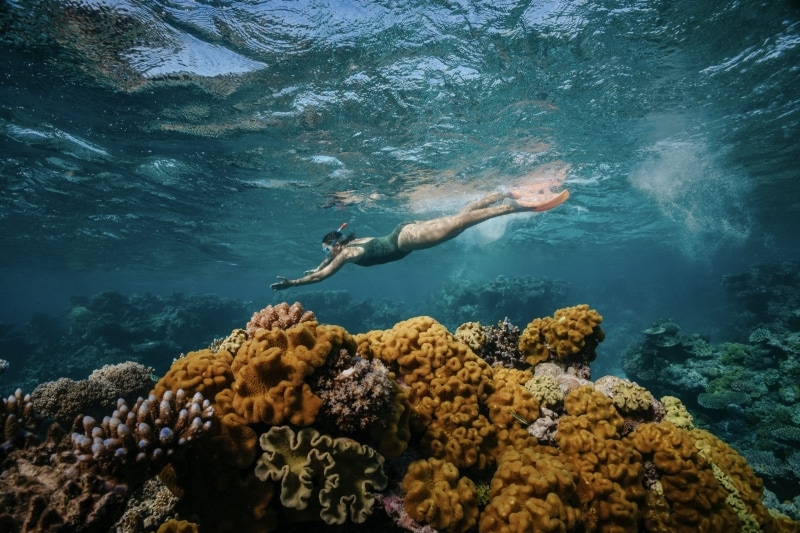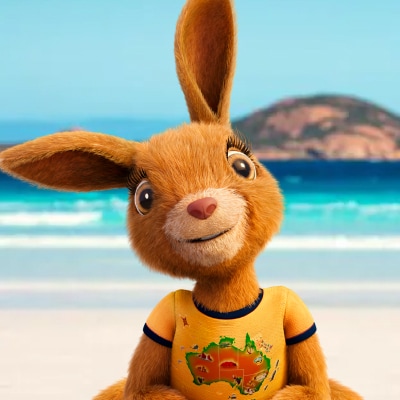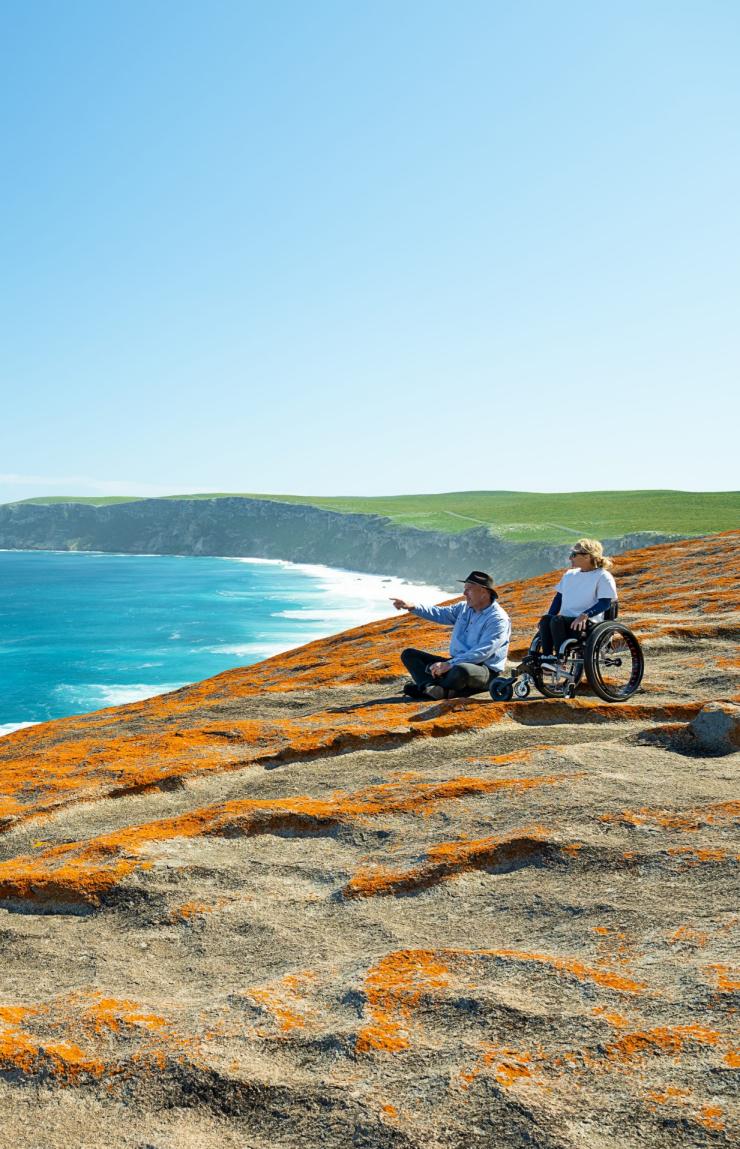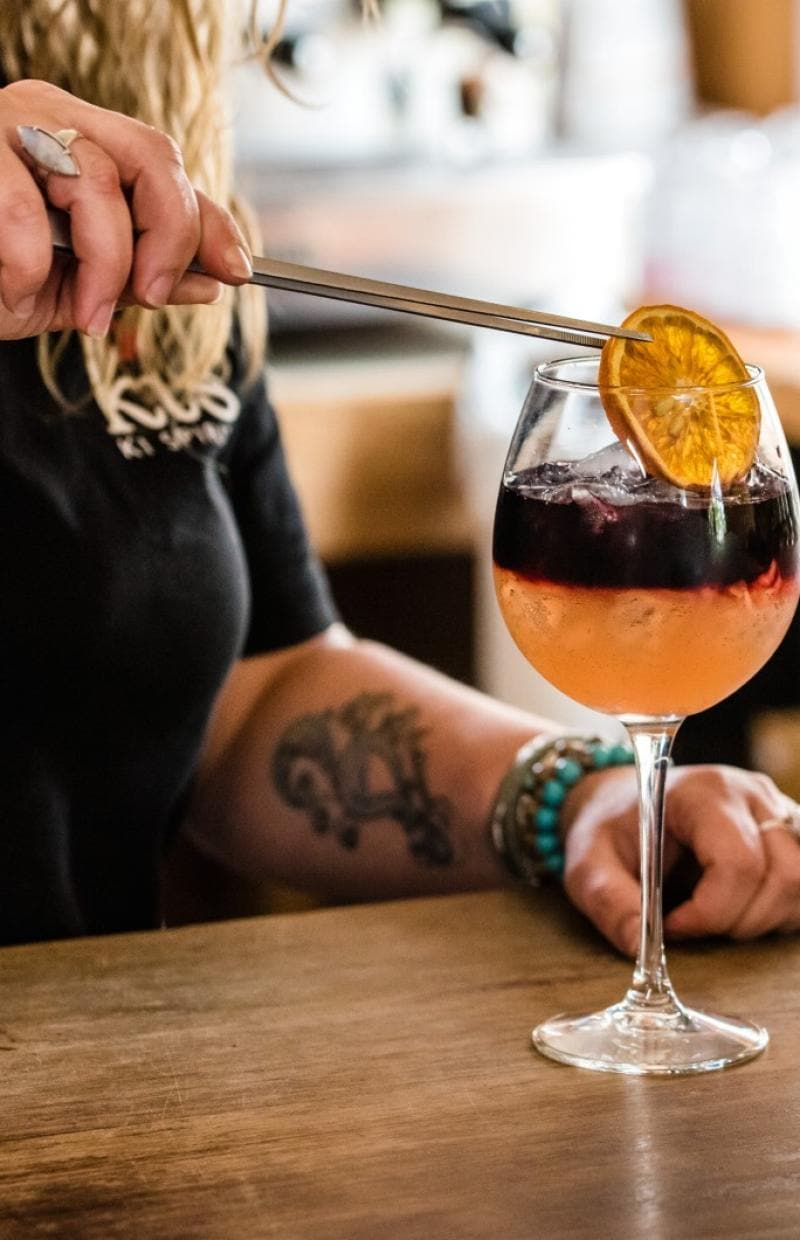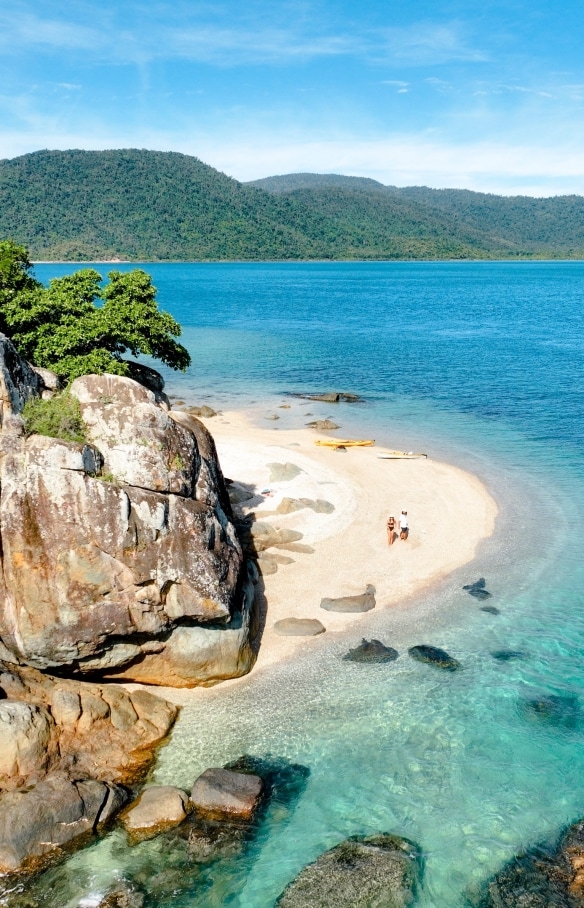Kangaroo Island, South Australia
Guide to Kangaroo Island
Kangaroo Island is a nature lover's paradise, with prolific native wildlife, dramatic coastal sightseeing and bountiful farmlands.
Kangaroo Island, 13km (8mi) off the coast of South Australia, is one of the best places in Australia to see wild animals like koalas, kangaroos, sea lions and seals. Throw in jaw-dropping geology and a hyper-local food and beverage scene, and Kangaroo Island is a destination that will leave you inspired.
Kangaroo Island is a 30-minute flight from Adelaide Airport. Alternatively, drive 1.5 hours from Adelaide to Cape Jervis and catch the 45-minute vehicle and passenger ferry to the island.
- Rex and Qantas Link fly direct from Adelaide Airport (ADL) to Kangaroo Island Kingscote Airport (KGC)
- Car hire is available from Adelaide or from Penneshaw; be sure to book well in advance
There are no public transport or taxis on the island, so the best way to explore is to hire a car or join a tour. If you hire a car from the mainland, check that your provider allows their vehicles to be driven on Kangaroo Island, as some hire companies may have policies against it.
The climate on Kangaroo Island is best during autumn as the days are warm enough to explore the island, and the nights are cool enough to cosy up with a glass of local red wine.
If you want to avoid the crowds, winter is ideal. It also marks the start of whale watching season so you won’t be short on unforgettable experiences, even in the cooler months.
- High season: Autumn (March to May)
- Low season: Winter (June to August)
- Don’t miss: The chance to see sea lions pups playing and exploring at Seal Bay (late May to August).
From exploring the rugged coastline to relaxing in luxurious accommodation, Kangaroo Island strives to offer inclusive experiences for all travellers.
- Arrival: Adelaide Airport offers a range of assistive services for passengers with disabilities, including support with movement throughout the airport and digital guides for travellers with neurodivergence to prepare for their arrival. You can hire a wheelchair accessible vehicle from Hertz and drive two hours to Cape Jervis, where wheelchair accessible Sealink ferries will transport you and your vehicle to the island.
- Getting around: The best way to get around Kangaroo Island is via self-drive, which leaves you plenty of flexibility to explore at your own pace. You can hire cars on the island, but if you require a wheelchair accessible vehicle, it's a good idea to hire from Adelaide Airport.
- Accessible experience highlights: Wheelchair accessible boardwalks allow visitors to marvel at the sea lion-sprinkled Seal Bay and the striking formations of the Remarkable Rocks. Meet some of Australia's cutest creatures throughout the level ground at Kangaroo Island Wildlife Park and sleep in true luxury in the wheelchair accessible Flinders Suite at Southern Ocean Lodge.
- Helpful resources: Browse accessible features of Kangaroo Island's national parks, explore accessible accommodation and peruse guides to an accessible holiday in South Australia.

